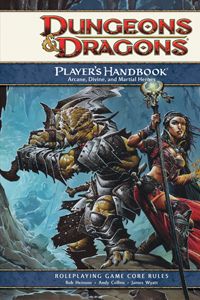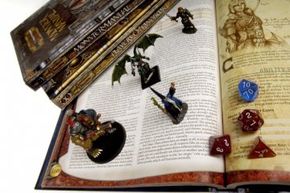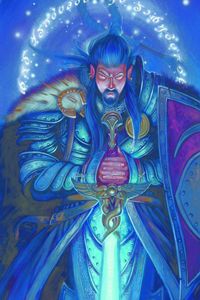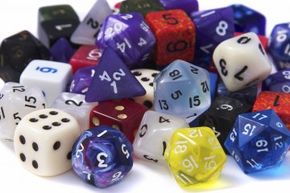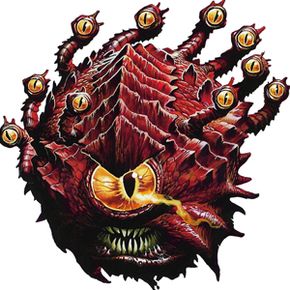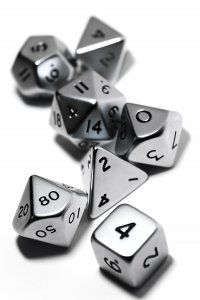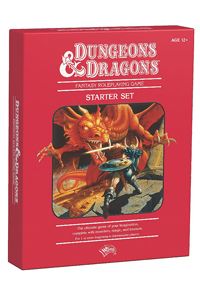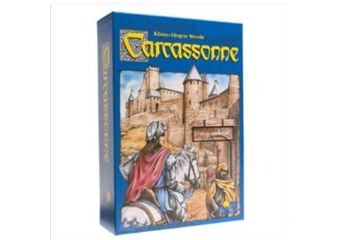The first version of Dungeons & Dragons was released in 1974: It was just a run of 1,000 rulebooks at a cost of $2400 [source: Kushner]. The game was modeled on Chainmail, a Medieval role-playing game created by Gary Gygax and modified to take place in cramped quarters (like a dungeon) and led by a guide (like a dungeon master) by his collaborator Dave Arneson.
After the first version of D&D took off like a rocket, Gygax's company, TSR (Tactical Studies Rules) released a more expanded version of Dungeons & Dragons in 1977. This edition is now called the Basic Set. At the same time, the company also released a different version, called Advanced Dungeons & Dragons (AD&D). This version of the game more closely followed Gygax's vision for D&D, with more intricate rules and more involved game play and was different enough so as to be considered a different game. The incompatibility between D&D and AD&D game play created a schism called the D&D dichotomy [source: The Acaeum]. So from 1977 on, the game followed at least two trajectories.
Throughout the late 1970s and '80s, TSR released new editions of Basic D&D and AD&D, including an entirely new Second Edition of AD&D in 1989 [source: WOC]. For Basic D&D, the game's creators released Forgotten Realms, a new fantasy setting for a series of campaigns players could insert their characters into. New manuals, like the Monstrous Compendium, the Complete Fighter's Handbook and the Complete Thief's Handbook added further detail and complexity to the game and expanding its capability of engrossing players.
Both games started to lose steam at the end of the 1980s, however, and sat virtually idle, although still available throughout the 90s. In 1997, Wizards of the Coast (the company that produces the successful Magic: The Gathering card game) purchased the rights to Dungeons & Dragons and Advanced Dungeons & Dragons from TSR [source: WOC]. In 2000, Wizards of the Coast released the first new edition of any Dungeons & Dragons, the Third Edition. It went back toward the Basic D&D concept, and the AD&D line was killed off [source: Grabinowski]. Three years later, the company released an updated version of the Third Edition with new rule books.
In late 2007, to much fanfare, WOC released the Fourth Edition of Dungeons & Dragons. The trouble with this version of the game was that characters created with any of the old versions were incompatible with the new edition [source: Grabinowski]. Although Wizards of the coast had cauterized the D&D dichotomy when they stopped releasing new editions of AD&D, it still continued the tradition by releasing what amounted to another entirely new game.
With the release of the Fourth Edition, Dungeons & Dragons had a truly fractured community. Although it was discontinued in 2000, AD&D still had plenty of devotees playing using the old books, either as their exclusive preference or just for a change of pace. What's more, there was now a new schism between Basic D&D and the new Fourth Edition. Then, in 2006, WOC released Dungeons & Dragons Online (DDO), a massively multiplayer online role-playing game. A survey of what started out as just plain old Dungeons & Dragons in 1974 has become a lot of disparate parts.
In the hope of bringing it all together under one tidy title, Wizards of the Coast announced that it would release a fifth edition, aka D&D Next. As of this writing, it remains unreleased, but it's been billed as making all past editions compatible. This announcement has been met with incredulity by the D&D community. One player suggested it would be tantamount to "trying to build a car that can use parts from a 2010 Mustang, a 1950 Packard, and a tractor" [source: Grabinowski].
Despite their differences, all editions and versions of D&D have one thing in common: Some people think they're satanic.

